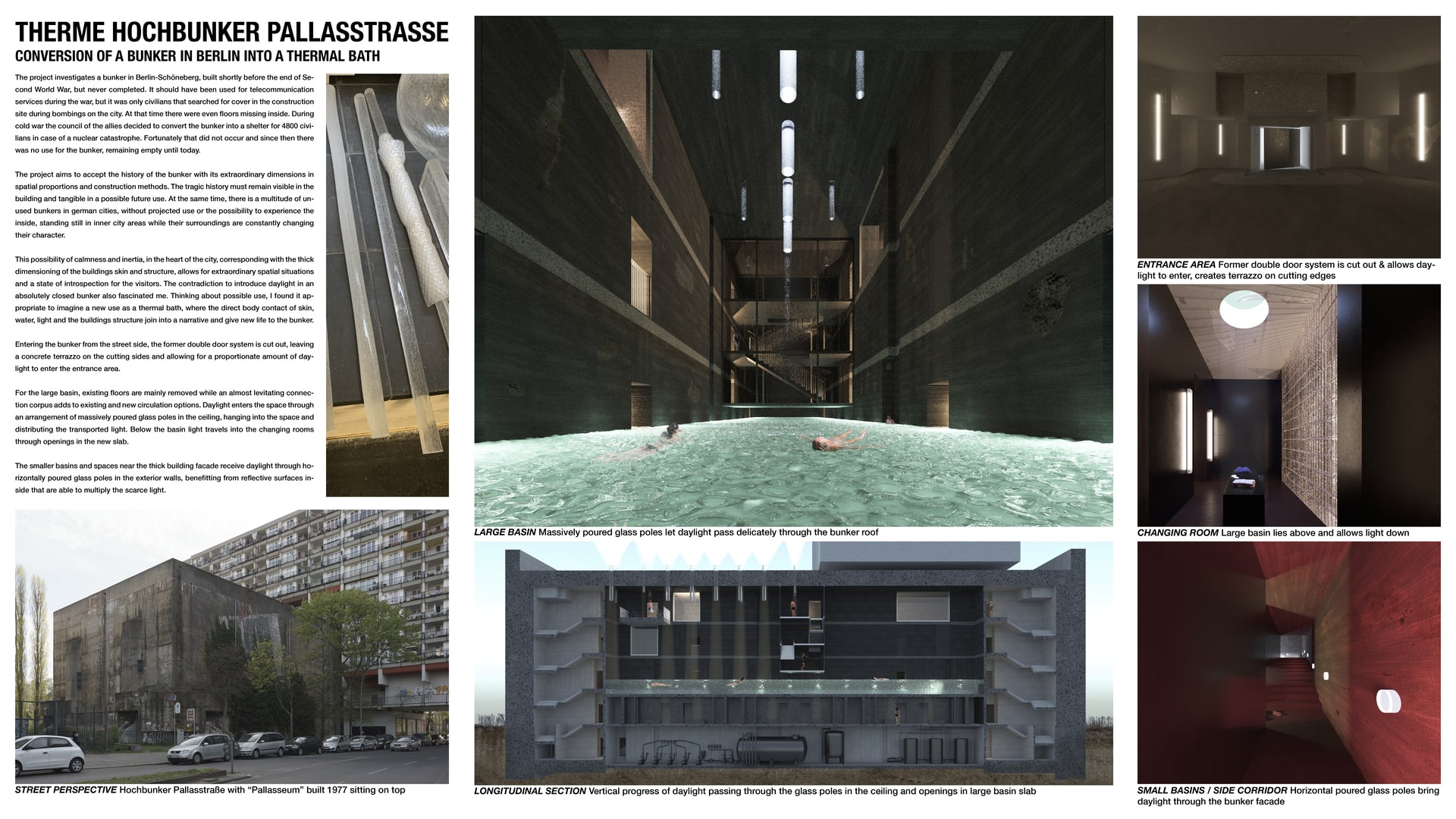Project Description
The project investigates a bunker in Berlin-Schöneberg, built shortly before the end of Second World War, but never completed. It should have been used for telecommunication services during the war, but it was only civilians that searched for cover in the construction site during bombings on the city. At that time there were even floors missing inside. During cold war the council of the allies decided to convert the bunker into a shelter for 4800 civilians in case of a nuclear catastrophe. Fortunately that did not occur and since then there was no use for the bunker, remaining empty until today. The project aims to accept the history of the bunker with its extraordinary dimensions in spatial proportions and construction methods. The tragic history must remain visible in the building and tangible in a possible future use. At the same time, there is a multitude of unused bunkers in german cities, without projected use or the possibility to experience the inside, standing still in inner city areas while their surroundings are constantly changing their character. This possibility of calmness and inertia, in the heart of the city, corresponding with the thick dimensioning of the buildings skin and structure, allows for extraordinary spatial situations and a state of introspection for the visitors. The contradiction to introduce daylight in an absolutely closed bunker also fascinated me. Thinking about possible use, I found it appropriate to imagine a new use as a thermal bath, where the direct body contact of skin, water, light and the buildings structure join into a narrative and give new life to the bunker. Entering the bunker from the street side, the former double door system is cut out, leaving a concrete terrazzo on the cutting sides and allowing for a proportionate amount of daylight to enter the entrance area. For the large basin, existing floors are mainly removed while an almost levitating connection corpus adds to existing and new circulation options. Daylight enters the space through an arrangement of massively poured glass poles in the ceiling, hanging into the space and distributing the transported light. Below the basin light travels into the changing rooms through openings in the new slab. The smaller basins and spaces near the thick building facade receive daylight through horizontally poured glass poles in the exterior walls, benefitting from reflective surfaces inside that are able to multiply the scarce light.
